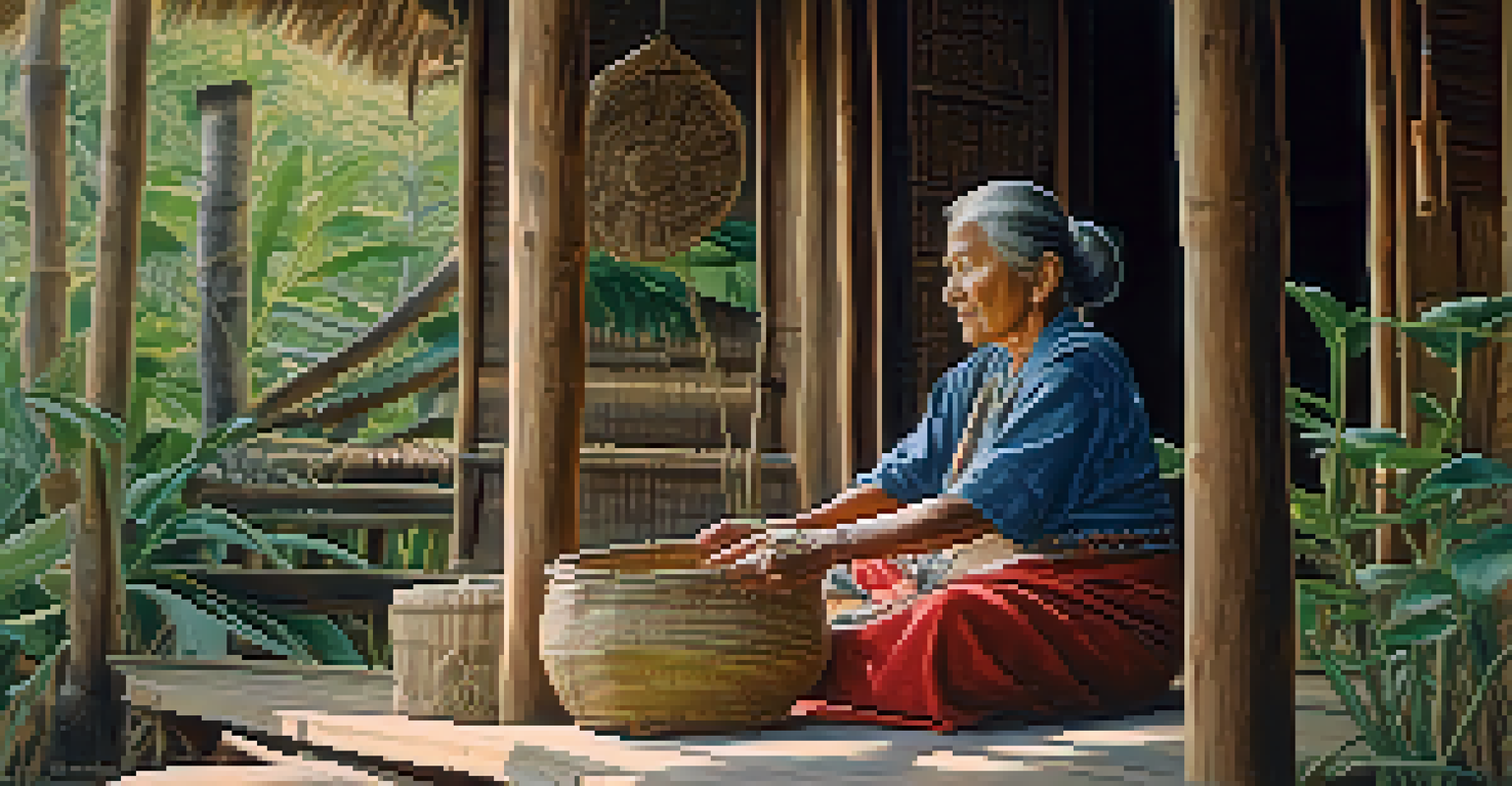Historical Significance of the Nisenan Tribe in Sacramento

Introduction to the Nisenan Tribe's History
The Nisenan Tribe, indigenous to the Sacramento Valley, has a rich history that dates back thousands of years. Their connection to the land shapes their cultural identity and traditions. The tribe's name itself means 'the people' in their native language, emphasizing their deep-rooted relationship with their environment.
The land is a part of us; we are a part of the land. Our ancestors understood this, and it shapes who we are today.
Historically, the Nisenan thrived as hunter-gatherers, utilizing the abundant resources of the valley. They skillfully cultivated the land, relying on seasonal changes to guide their practices. This relationship with nature not only provided sustenance but also fostered a spiritual connection with the earth.
Understanding the Nisenan's history is crucial for recognizing the broader narrative of Native American tribes in California. Their experiences during the period of colonization and the impact of European settlers are integral to the story of Sacramento and its surrounding areas.
Cultural Practices and Traditions of the Nisenan
The Nisenan Tribe is known for its rich cultural traditions, including unique storytelling, art, and music. These practices were not just entertainment; they served as a means of passing down knowledge and preserving their history. For instance, storytelling often conveyed moral lessons and historical accounts important to the tribe's identity.

Art, particularly basket weaving, is another significant aspect of Nisenan culture. Baskets were crafted from local materials and were used for various purposes, from gathering food to ceremonial uses. This artistry reflects not only the tribe's resourcefulness but also their deep connection to the natural world.
Nisenan Tribe's Rich Cultural Heritage
The Nisenan Tribe boasts a vibrant culture characterized by storytelling, art, and music, which are essential for preserving their history and identity.
Music and dance also played vital roles in Nisenan life, often intertwined with rituals and celebrations. These cultural expressions fostered community bonds and allowed the tribe to celebrate their identity, reinforcing their resilience through generations.
The Impact of Colonization on the Nisenan Tribe
The arrival of European settlers in the mid-19th century marked a turning point for the Nisenan Tribe. Colonization brought significant disruptions to their way of life, including loss of land, resources, and traditional practices. Forced treaties and the Gold Rush dramatically altered the landscape and dynamics of the Sacramento Valley.
Education is the key to understanding our past and ensuring our future. We must share our stories and traditions with the world.
As settlers moved in, the Nisenan faced increased pressure from land encroachment and displacement. Many were forced to adapt to new realities, often struggling to maintain their cultural identity amidst these challenges. The tribe's population dwindled as diseases introduced by Europeans took a heavy toll.
Despite these hardships, the Nisenan have shown remarkable resilience. Many descendants continue to advocate for their rights and work towards preserving their cultural heritage, showcasing their strength and determination in the face of adversity.
Nisenan Tribe's Role in Sacramento's Development
The Nisenan Tribe played a significant role in shaping the early development of Sacramento. Their knowledge of the land proved invaluable to settlers, who relied on indigenous methods for farming and resource management. This collaboration helped establish Sacramento as a critical agricultural hub.
As the city grew, the Nisenan's contributions often went unrecognized. Their historical significance is sometimes overshadowed by the narratives of European settlers. However, understanding their role is essential for appreciating the full story of Sacramento's development.
Impact of Colonization on Nisenan
European colonization significantly disrupted the Nisenan Tribe's way of life, leading to loss of land and cultural practices, yet they continue to show resilience.
Today, initiatives are underway to honor the Nisenan's contributions to the region. Efforts include educational programs and community events that celebrate their history and culture, aiming to create a more inclusive narrative of Sacramento's past.
Contemporary Nisenan: Challenges and Resilience
In the modern era, the Nisenan Tribe faces numerous challenges, including struggles for federal recognition and land rights. Despite these obstacles, the community remains committed to preserving their cultural heritage and advocating for their rights. Their resilience is evident in the ongoing efforts to educate others about their history and traditions.
Cultural revitalization projects are gaining traction within the Nisenan community. These initiatives focus on language preservation, traditional crafts, and community gatherings, fostering a sense of identity and belonging. They also serve as a platform for younger generations to connect with their heritage.
The Nisenan's determination to thrive in contemporary society highlights their enduring spirit. By reclaiming their narrative and fostering cultural pride, they continue to inspire others and strengthen their community.
Significance of Land and Nature to the Nisenan
Land is central to the Nisenan identity; it is not just a resource but a vital part of their culture and spirituality. The tribe's connection to the land influences their traditions and social structure, emphasizing the importance of stewardship and respect for nature. This relationship is a testament to their sustainable practices and ecological knowledge.
The Nisenan's understanding of the environment is evident in their agricultural practices, which are deeply rooted in their cultural beliefs. They traditionally utilized controlled burns to manage landscapes and promote growth, showcasing their innovative approaches to land management. This wisdom reflects a holistic view of nature, emphasizing harmony and balance.
Importance of Education in Preservation
Education initiatives and community events play a crucial role in celebrating and preserving Nisenan heritage, fostering understanding and respect for their history.
Today, the tribe's commitment to environmental conservation continues. Many Nisenan advocate for the protection of natural resources, emphasizing the significance of preserving their ancestral lands for future generations. Their efforts are a powerful reminder of the importance of land stewardship in the context of cultural identity.
Celebrating Nisenan Heritage Through Education
Education plays a crucial role in preserving the Nisenan heritage and promoting awareness about their history. Various programs aim to integrate Native American studies into school curricula, providing students with a broader understanding of the region's history. These initiatives help foster respect and appreciation for indigenous cultures.
Community events, such as cultural festivals and workshops, also serve to celebrate Nisenan heritage. These gatherings create opportunities for learning and engagement, allowing people to experience Nisenan traditions firsthand. They not only honor the past but also empower the community by fostering connections with others.

By prioritizing education and cultural exchange, the Nisenan Tribe is actively shaping a more inclusive future. Their commitment to sharing their story ensures that their heritage is recognized and valued, paving the way for ongoing dialogue and understanding within the broader Sacramento community.